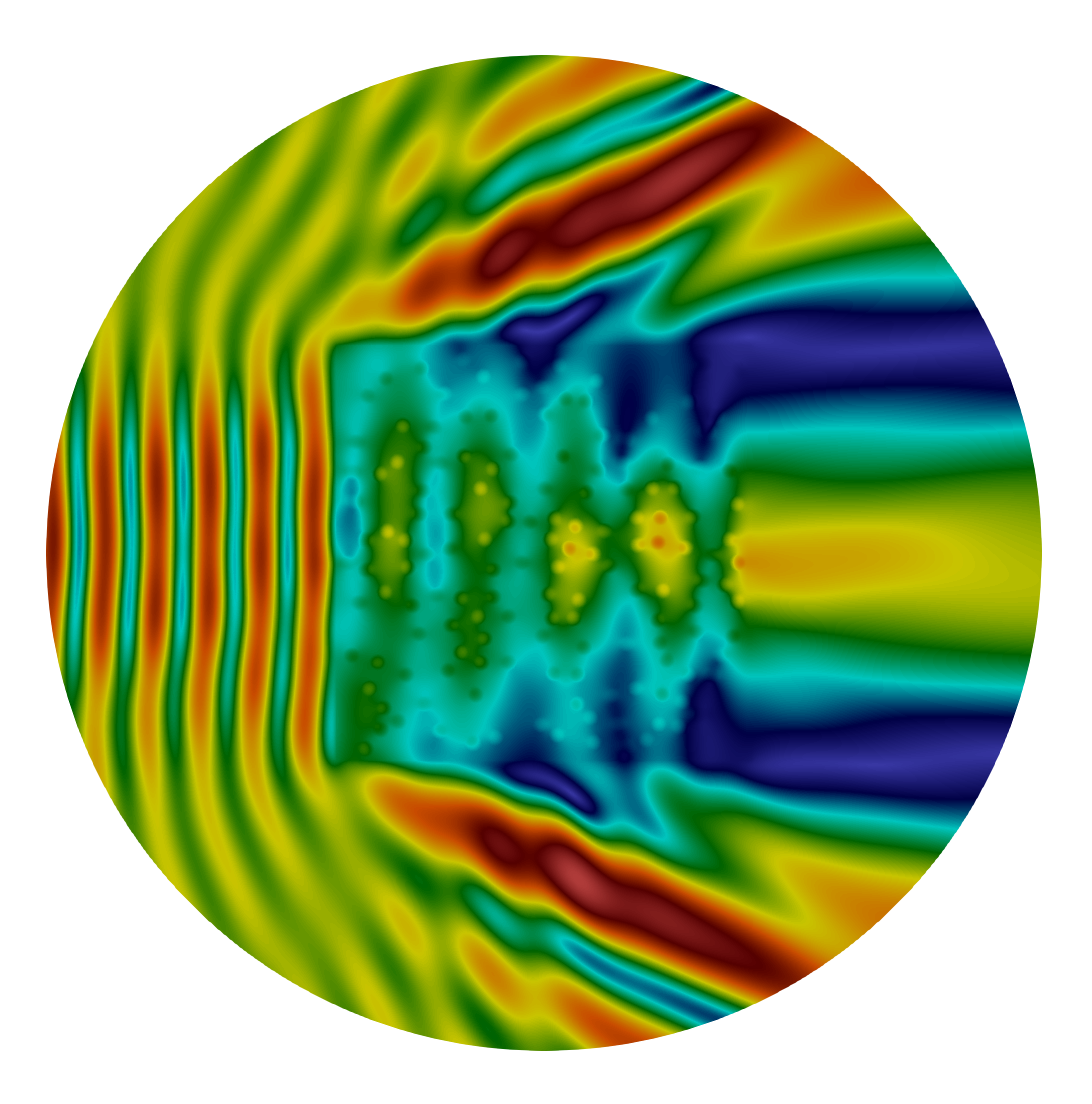Asymptotic analysis, homogenization ans effective models
We consider in this work phenomena described by the usual models (mostly Helmholtz, elasticity or Maxwell’s equations), the specificity is the presence of a thin layer, a thin coating, or oscillating coefficients, whose characteristic dimension is small compared to the wavelength, which could make a naive computation prohibitive. Our objective is, by using asymptotic analysis, to derive effective models, better suited for analytic computation when it is possible and numerical simulation. Since these effective models are only approximate, we perform an error analysis, when it is possible, and illustrate numerically the accuracy of these effective models.
Effective boundary or transmission conditions in presence of thin layers and coatings

This activity concerns the modelling of thin layers or coatings. Using an asymptotic analysis with respect to the layer thickness, denoted ε, we can derive approximate effective boundary or transmission conditions, which remove the need to mesh the layer and which takes into account the phenomena near the layer with an error of a certain order in ε. POEMS has developed a good expertise in this field in the past decade. The past few years, we have adopted the same approach to handle more ambitious cases: (1) periodic thin layers with several resonant micro-structures, (2) random thin layers.
Periodic and random homogenization

We have considered in these works the wave equation in presence of a volume heterogeneous medium when the size of the heterogeneities is small compared to the wavelength. The first theme concerns the derivation of effective models in order to replace the heterogeneous media by a homogeneous effective one in two different situations. In the first case, the media is periodic with negative materials inclusions. In the second case, the media is slowly (compared to the wavelength) varying and con- tains small heterogeneities randomly distributed. The second theme is motivated by the fact that classical homogenized or effective models are well-adapted in unbounded periodic media but poorly takes into account the phenomena near interfaces or boundaries. Using an enriched asymptotic expansion, we are able to propose high order effective boundary or transmission conditions (similar to the ones obtained in presence of thin layers).
Foldy-Lax models
Foldy-Lax models are asymptotic models used to compute the field scattered by multiple small obstacles. While such frequency-domain models are fairly well-studied, research on their time- domain counterpart is still in its infancy stage. We have devised such a new time-domain Foldy- Lax model as a Galerkin discretization of single-layer boundary integral operator and have proven its accuracy and stability.



